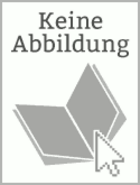Detailansicht

Literature of the Arminian Controversy
eBook - Religion, Politics and the Stage in the Dutch Republic
ISBN/EAN: 9780191066641
Umbreit-Nr.: 138541
Sprache:
Englisch
Umfang: 320 S.
Format in cm:
Einband:
Keine Angabe
Erschienen am 03.12.2015
Auflage: 1/2015
E-Book
Format: PDF
DRM: Adobe DRM
- Zusatztext
- The Literature of the Arminian Controversy highlights the importance of the Arminian Controversy (1609-1619) for the understanding of the literary and intellectual culture of the Dutch Golden Age. Taking into account a wide array of sources, ranging from theological and juridical treatises, to pamphlets, plays and and libel poetry, it offers not only a deeper contextualisation of some of the most canonical works of the period, such as the works of DirckVolckertz. Coornhert, Hugo Grotius and Joost van den Vondel, but also invites the reader to rethink the way we view the relation between literature and theology in early modern culture. The book argues how the controversy over divine predestination acted as a catalyst for literary and cultural change, tracingthe impact of disputed ideas on grace and will, religious toleration and the rights of the civil magistrate in satirical literature, poetry and plays. Conversely, it reads the theological and political works as literature, by examining the rhetoric and tropes of religious controversy. Analysing the way in which literature shapes the political and religious imaginary, it allows us to look beyond the history of doctrine, or the history of political rights, to include the emotive and imaginativepower of such narrative, myth and metaphor.
- Kurztext
- From breakfast toast to evening wine, yeast is the microscopic thing that we cannot live without. We knew what yeast did as an invisible brewer and baker long before we had a clue about the existence of microorganisms. Ten thousand years ago, our ancestors abandoned bush meat and wild fruit in favor of farming animals and cultivating grain. Leaving the forests and grasslands, our desire for beer and wine produced by the fungus was a major stimulus for agriculturalsettlement. It takes a village to run a brewery or tend a vineyard. We domesticated wild yeast and yeast domesticated us. With the inevitable escape of the fungus from beer vats into bread dough, our marriage with yeast was secured by an appetite for fresh loaves of leavened bread. Over the millennia, we have adapted the technologies of brewing, winemaking, and baking and have come to rely on yeast more and more. Yeast produces corn ethanol and other biofuels and has become the genetically-modified darling of the pharmaceutical business as a source of human insulin and a range of life-saving medicines. These practical uses of yeast have been made possible by advances in our understanding of its biology, and the power of genetic engineering has been used to modify thefungus to do just about anything we wish. We know more about yeast than any other organism built from complex cells like our own. To understand yeast is to understand life. In this book Nicholas P. Money offers a celebration of our favorite microorganism.